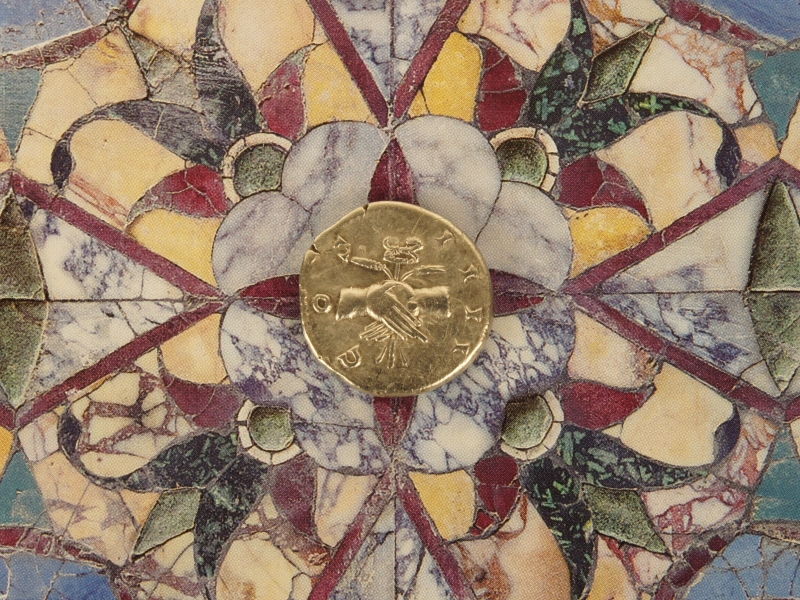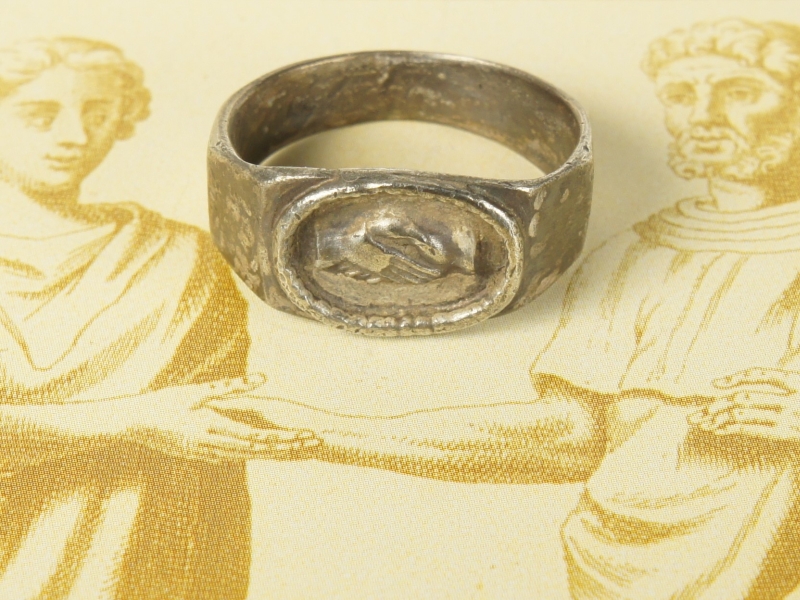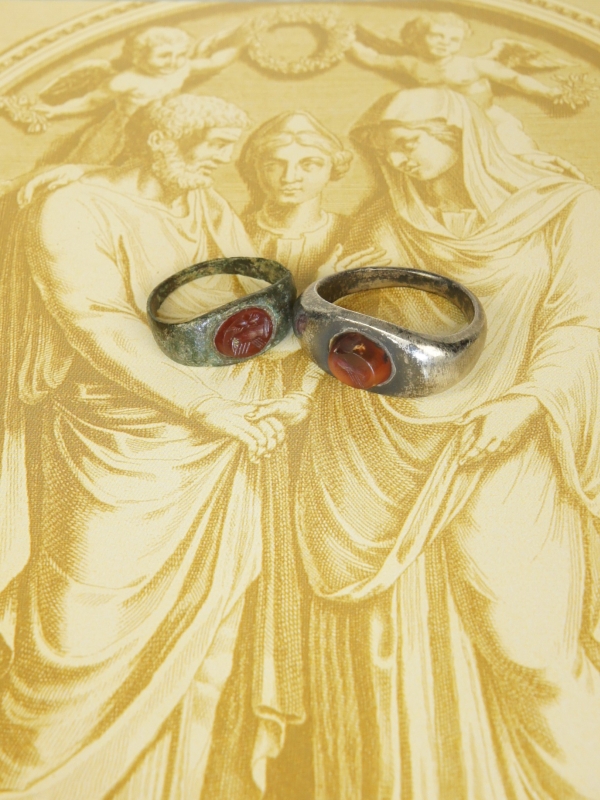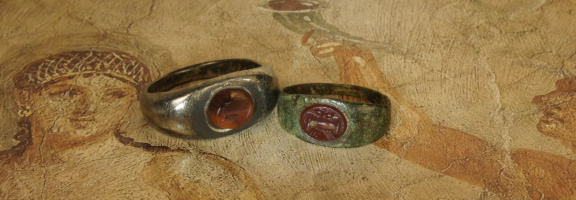The allegory of two clasped right hands can already be found in ancient Greek and Roman culture. The handshake stands for Concordia. She is the personification of harmony in Roman mythology, or Omonoia in Greek mythology. According to the Roman idea, it promotes and maintains the unity, brotherhood and solidarity of the citizens of Rome. The symbol of a handshake was embossed on coins as a symbol for the agreement of a completed trade (Fig. 01). Marcus Aurelius, adoptive son and successor of Antoninus Pius, had this consecration coin minted after his divinization. Under Antoninus Pius the Roman Empire experienced its last long period of peace.

Fig. 01: Collection TN: Roman, AR Denarius, Antoninus Pius, 161-180 AD. The "Revers", reverse side of the coin, shows two interlaced right hands as a symbol of unity with the Caduceus, the caduceus of Mercury as a symbol of trade, and ears of corn as emblems of imperial generosity.
The conclusion of a business contract was sealed by the Romans with a handshake, the dextrarum iunctio, meaning the connection of the right hands. The business partners happily exchanged a ring with clasped right hands, a Fede ring, as a confirmation of the agreement. Incidentally, the term "Fede ring" was only used retrospectively, since the 19th century, by the jewellery collectors of that time (Fig. 02).

Fig. 02: Collection TN: Roman, 3rd century AD, silver. The hands are neither characteristically worked out nor provided with personal attributes. They look stylized like a pictogram, which indicates a contract rather than a friendship ring.
Soon the symbol of the dextrarum iunctio per se stood for a lawful union of any kind. The Romans also regarded marriage as a legal contract. The united right hands are to be interpreted here as a sign of loyalty and agreement. It was customary to give the bride a ring with two intertwined right hands the day before the wedding. Thereafter she has worn it on the ring finger of her left hand. The solemn symbolic gesture showed the mutual understanding of the two families of the spouses and sealed the promise of marriage. On the wedding day itself, the two right hands of the bride and groom were tied with a scarf in a festive act.
Thus, the handshake went from the business neutral dextrarum iunctio to the personally highly emotional mani in fide, in English something like hands in faith, in trust. The Fede ring is becoming the popular signature symbol that reaffirms a marriage vow or bond of friendship and makes it visible. In this sense Ovid probably wanted to pinpoint his infatuation for the beautiful Corinna when he dedicated a poem in his Amores about 16 BC. entirely to the ring: "Ring, which you soon enclose the finger of the loveliest girl, whose sole value is only the giver's love." (Elegies of Love, II, 15.)
According to Pliny the Elder, the original Roman engagement and wedding ring, the annulus pronubus, was a simple, humble ring made of iron. In his Naturalis Historia he wrote around 50 AD: "Even those who had received gold rings on the occasion of an embassy wore them only in public and resumed the iron ring in their homes. In reference to this custom is also sent an iron ring as a gift to a fiancee today, without a stone in it." (Naturalis Historia, XXXIII, 4.)
However, by the 2nd century AD at the latest, those who could afford it, opted for more valuable metals and alloys, with gold being the ultimate choice. The Romans no longer wanted to do without precious, decorative or glass stones. The orange-red carnelian, a variety of agate, was very popular. The right hands, lying one on the other, were carved deep into gems, so-called intaglia, or made as raised reliefs, so-called cameos (Fig. 03).

Fig. 03: Collection TN: Roman, ca. 2nd century AD, bronze with carnelian intaglio and silver with carnelian intaglio.
Marriage in ancient Rome was a strictly monogamous institution. By law, a Roman citizen could have only one spouse at a time. The practice of monogamy distinguished the Greeks and Romans from other ancient civilizations, where the leading man typically had multiple wives. In 313 Constantine the Great initiated the rise of Christianity to the most important religion in the Roman Empire with the introduction of religious freedom. The early Christians adopted the doctrine of monogamy from the ancient Romans. The authorities of the early Christian church recognized the Fede ring as a sign of a marriage vow before God.
With this liturgical legitimation, the mani in fide are placed in a religio-spiritual context from the Roman symbol of a secular contract that can be dissolved. However, the profane clasped hands fell somewhat out of fashion in the Byzantine Empire. Art and culture were increasingly shaped by the Christian church and its motifs and symbols such as the cross and portraits of saints. Nonetheless, the Fede ring has a long future ahead of it!
×
